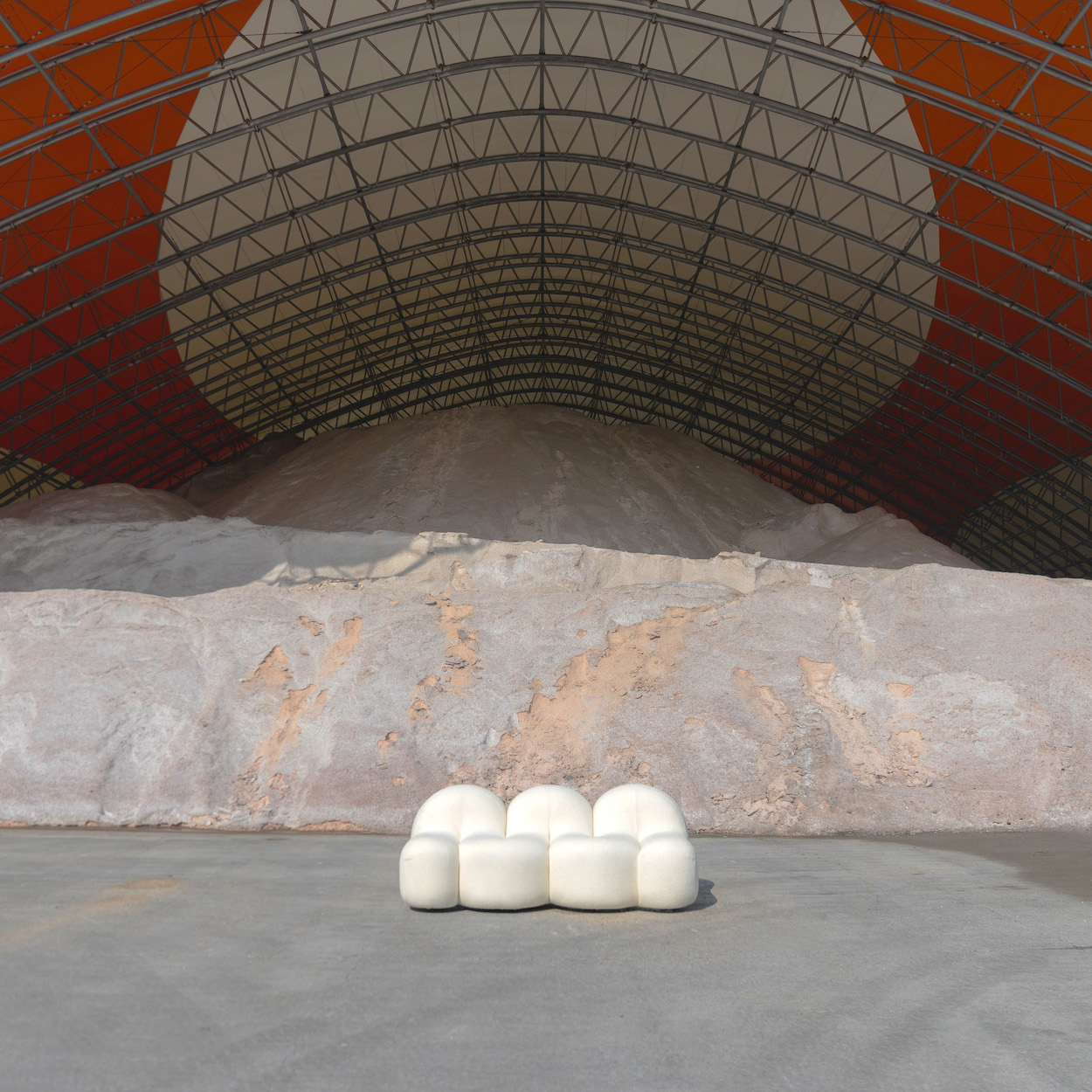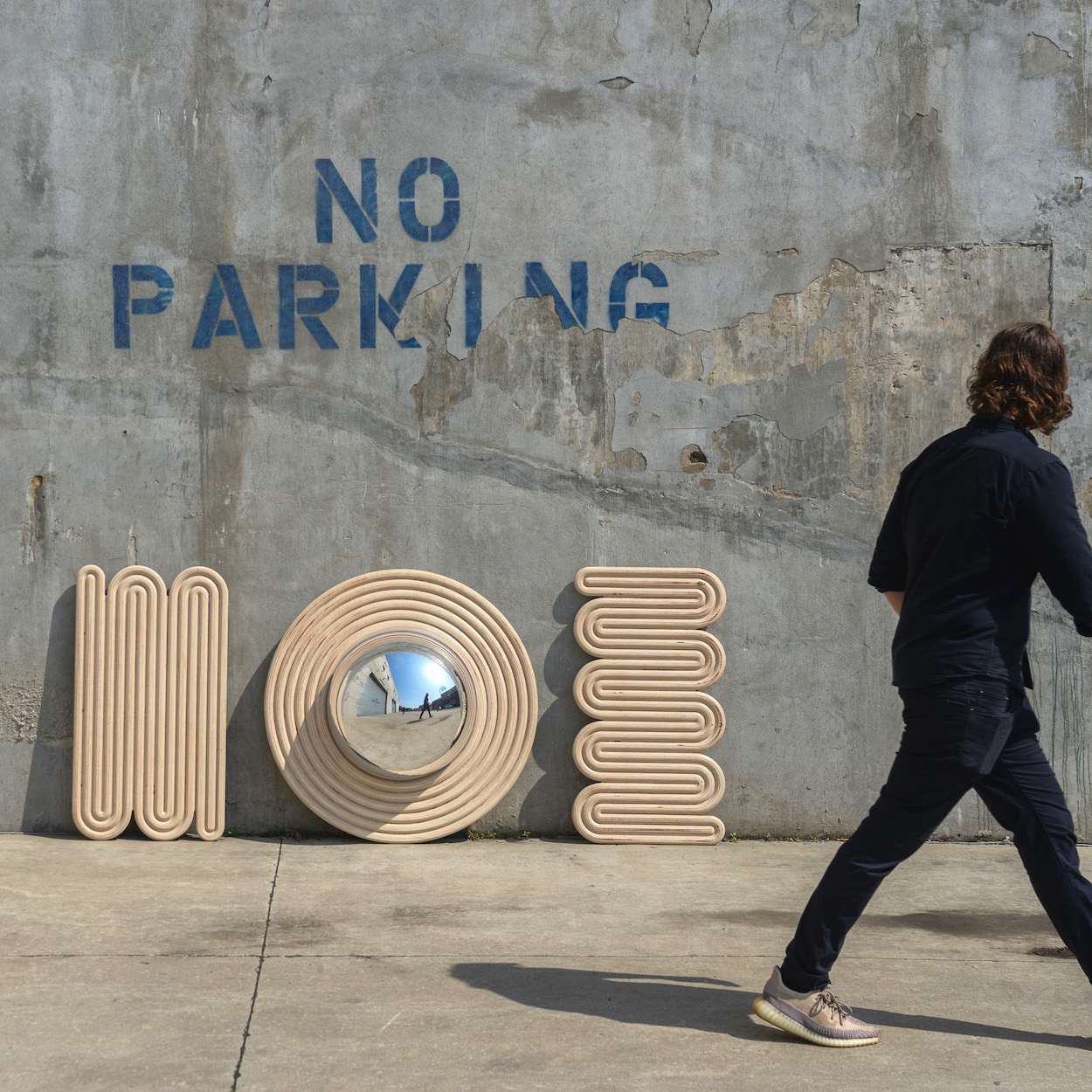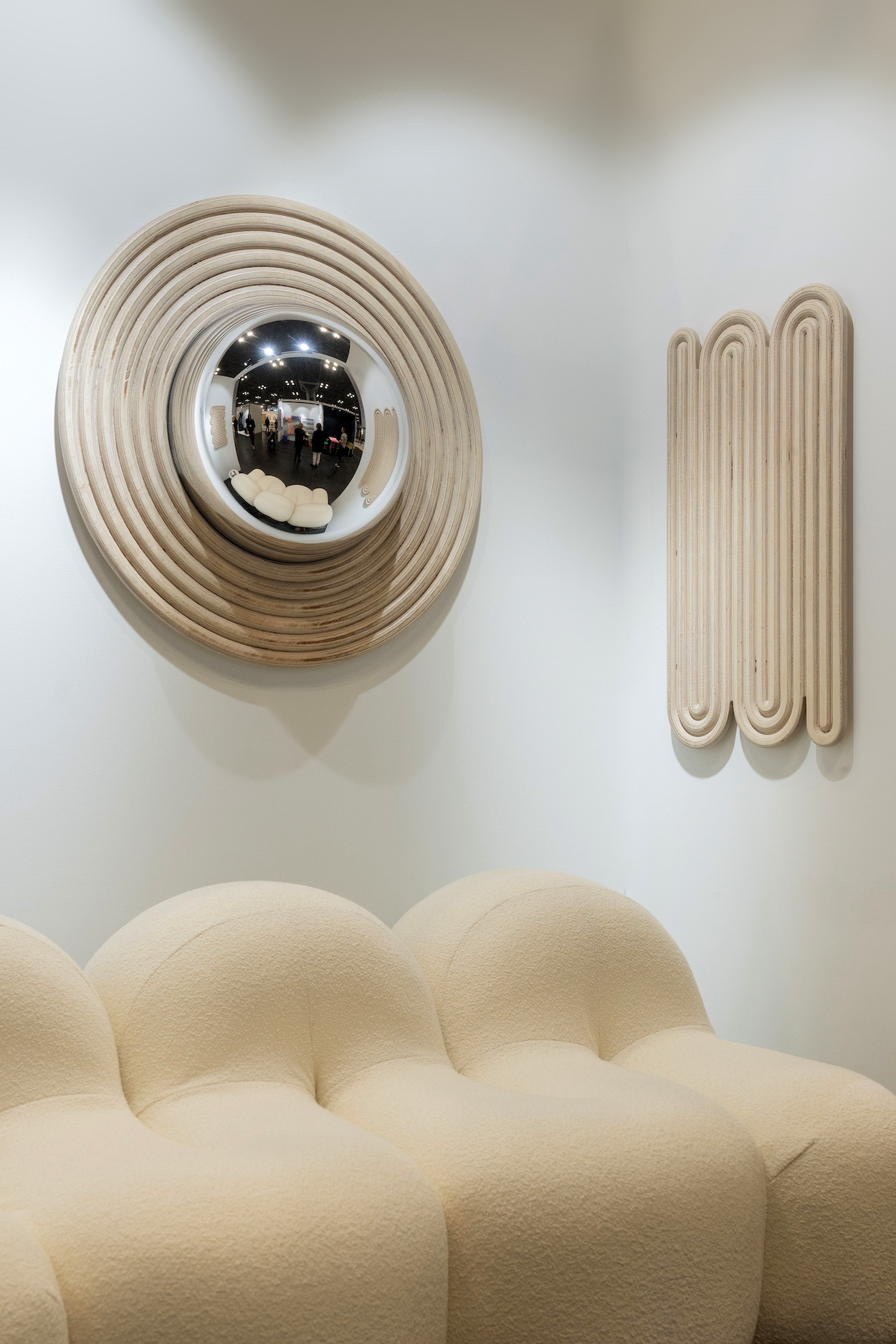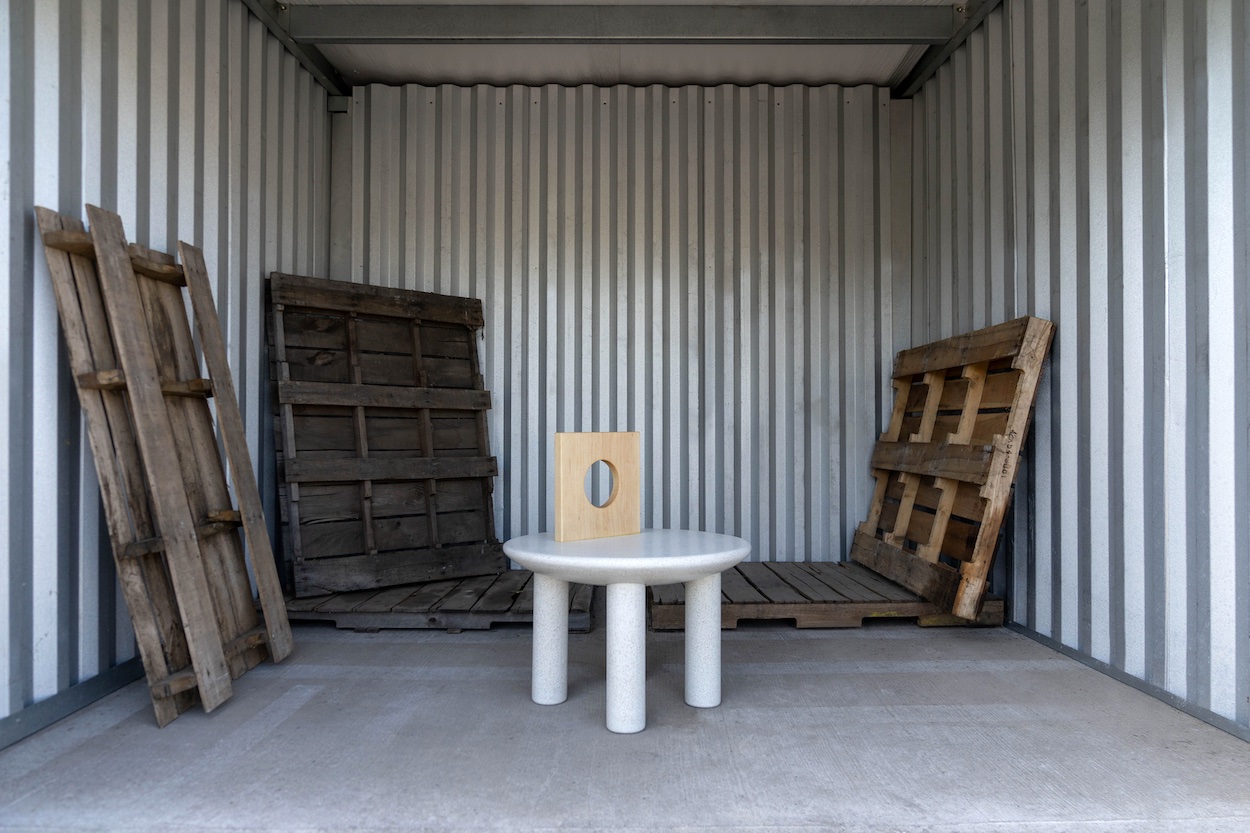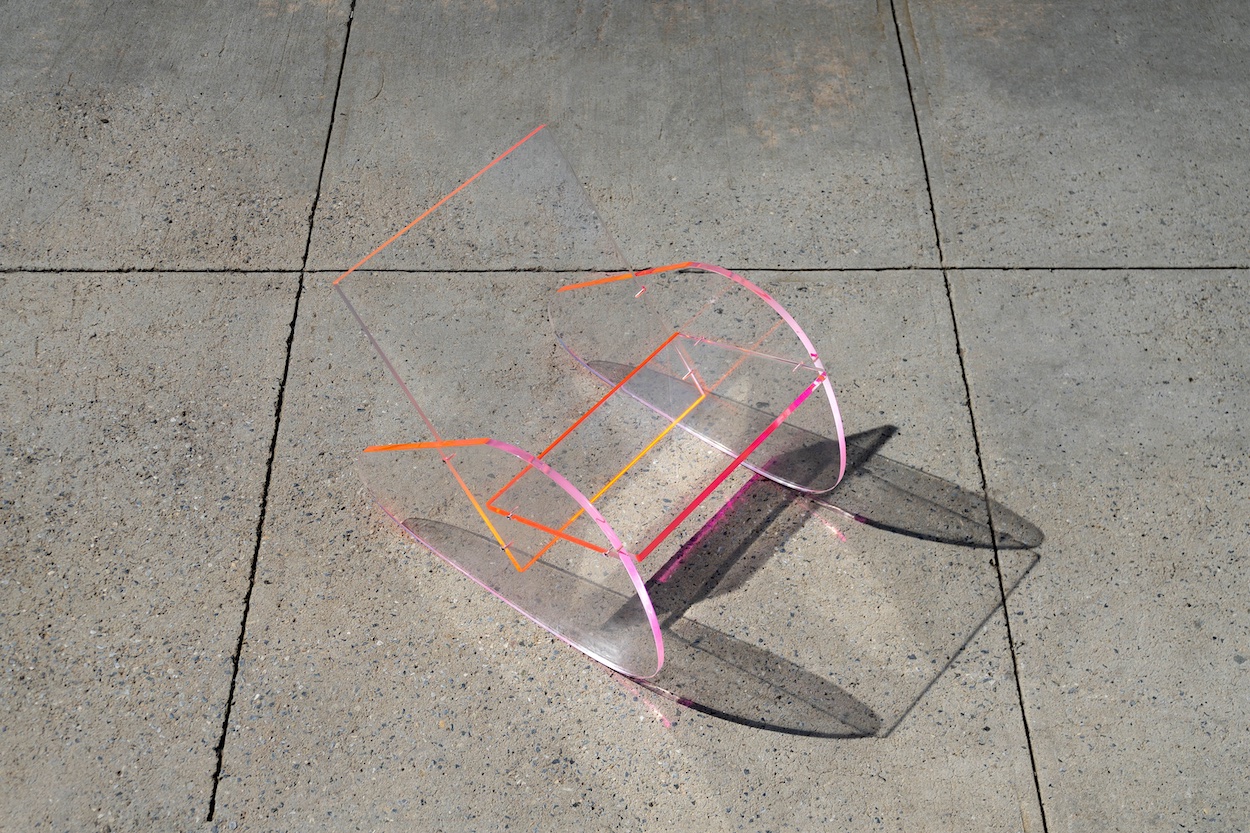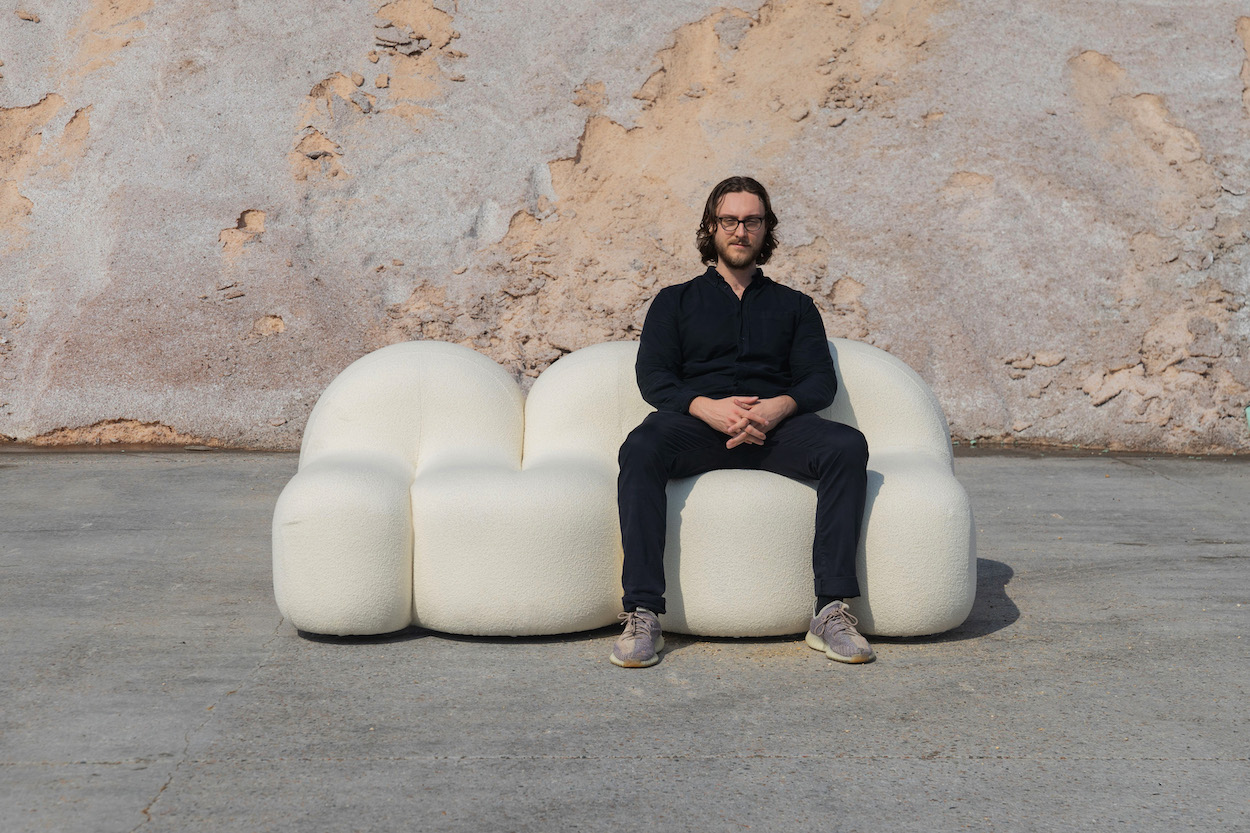Here, we ask designers to take a selfie and give us an inside look at their life.
Age: 29
Occupation: Multidisciplinary designer exploring spatiality at multiple scales (architecture, interior design, furniture design).
Instagram: @the.high.key
Hometown: New York.
Studio location: Brooklyn.
Describe what you make: I leverage digital technology to create rare objects and environments. Through my explorations, I reconstitute industrial materials and transform them for human use. This act subverts standardization in favor of variance and personal expression.
The most important thing you’ve designed to date: My first collection, Relief, was recently exhibited at ICFF Manhattan. This has been a pivotal moment for me as I’m beginning to increase the scope of my projects. Working at the scale of a collection has allowed me to utilize multiple fabrication technologies simultaneously, integrating differences in service of a holistic body of work.
Describe the problem your work solves: In the United States, the transition from an economy dependent on manual labor to faster automated processes has removed human beings from manufacturing. We no longer have a relationship with the spaces of industry, just the products that are churned out and the digital platforms that facilitate them.
I explore this condition through a different lens. What if we could leverage the physical material of industry for personal artistic production? What if these forgotten spaces were in service of humans as well as products? By integrating these conflicting qualities I create an alternative relationship with our built environment.
Describe the project you are working on now: I have been collaborating with a robotic knitting facility that creates sustainable small batch textiles. Working at the scale of a product as opposed to making something out of existing materials has totally changed the way that I design. The fabrication of a chair becomes a relational process. I design the product’s pattern, I change the form of the object, and continue this back and forth until the item is complete.
I’m currently working with an AI to generate a series of dream-like images of architecture. The AI produces variations while I refine and clean up everything manually. I have a background in architecture, so it’s been great returning to explorations of buildings without having project and budget limitations.
A new or forthcoming project we should know about: While this project has existed in some form for nearly a year, I’m finally fabricating the chairs from my collectible series. CreaChairs is a generative project that involved the procedural creation of 1,000 unique designs. After this process was completed, I curated down the batch to a selection of four chairs to be built as full-scale objects. While three of the chairs have already been auctioned off, I am planning a New York City–based event in late October to make the final auction more accessible to the design community.
What you absolutely must have in your studio: Anything that allows me to shut out the outside word and do some legitimate introspection. Music, light, a large surface, and room to move in.
What you do when you’re not working: I’m looking or listening. I have a habit of archiving all of my disparate interests into legible formats. Playlists, mood boards, albums. The organizational component becomes as important as each individual item itself.
Sources of creative envy: Pierre Paulin’s furniture designs have come back in a big way. He was a fascinating character that was able to integrate utility and aesthetics like few designers can. Frank Ocean and Kanye West have recently helped popularize the legendary Dune Sofa, which is essentially a modular conversation pit. The idea of becoming a cult classic after you’ve died is a little sad, but you never really know what people will make of your ideas.
The distraction you want to eliminate: Unnecessary comparisons are a huge distraction for me. Sometimes I have to remind myself that I’ve only been doing this for a very short amount of time. Creativity and success are highly personal—there’s no universal definition.
The wrong opportunity is a distraction. I’ve gotten a lot better at saying no to work that I don’t resonate with. At the end of the day, thehighkey is about community, passion for the craft, and the search for an alternative present.
Concrete or marble? Concrete.
High-rise or townhouse? Neither.
Remember or forget? Remember.
Aliens or ghosts? Both.
Dark or light? Light.

